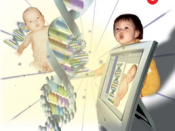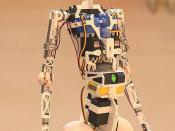Human Cloning: A Significant Misconception When a lamb called Dolly cloned successfully in Scotland was introduced on February 24, 1997, a Time/CNN poll conducted a few days after the announcement discovered that 93% of Americans disapproved of cloning humans (qtd. in Seelye A5). The main reason was that they felt cloning as a production of identical humans and so were feared by its result. However, if you think so, you have seriously misconceived human cloning like them, therefore, it is important to let all of you know why and how you misconceive human cloning for allying your fear and finding a possible way to tackle this issue.
In thinking about the misconceptions of cloning humans, it is also necessary to clear the ground a little, therefore, it is better to define on cloning and introduce its history briefly first.
The word áçcloneáè comes from a Greek meaning áçtwigáè: taking a cut from a plant (Kass and Wilson 6).
John Harris mentions a clone is made up of groups of identical structures containing genetic materials such as mitochondria and chloroplasts and it also refers to at a group of organisms that are genetically identical (9).
As for the word áçcloningáè, it is a process. Cohen and Tomkin state cloning, in its modern usage, is loosely used to mean asexual reproduction of any kind (193). When applied to humans, cloning is divided into two processes. The first is known as áçtwiningáè. According to Leon R. Kass and James Q. Wilson, this is a process similar to what happens in utero when a fertilized egg splitting into two or more embryos forms identical twins (ix-xi). Twining occurs when the cells of an embryo are removed and allowed to develop to produce twins of the original embryo. In addition, the second is termed...


